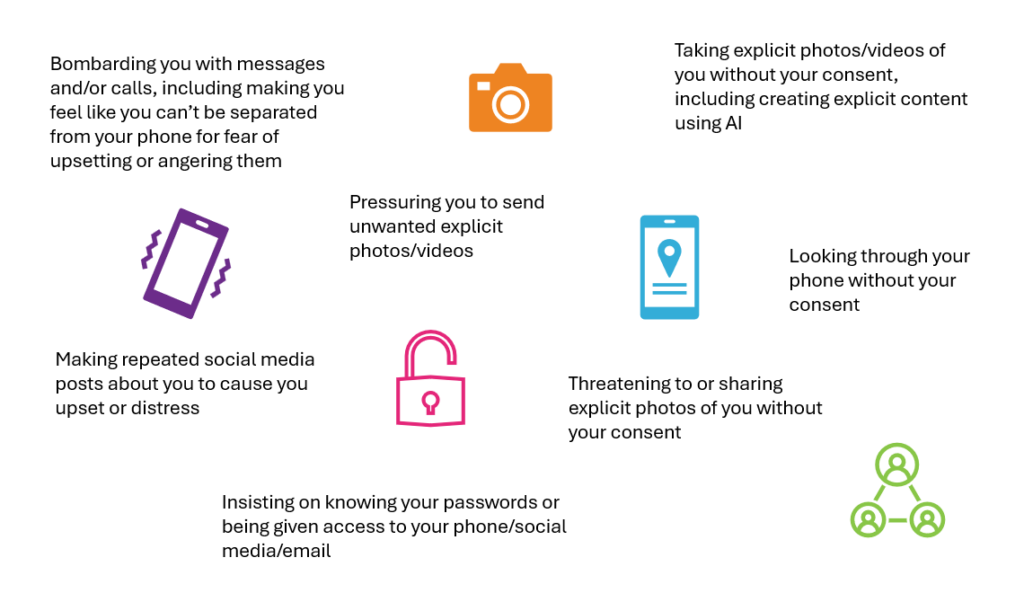What is the difference between cyberstalking and digital stalking?
Cyberstalking
Involves the use of the internet, social media, email, and other online tools to abuse someone. It can include behaviours such as sending threatening messages, spreading false information, or hacking into personal online accounts with the aim to control, intimidate, harass or stalk the victim. The perpetrator often remains anonymous, making it difficult for the victim to identify them.
Digital stalking
Digital stalking, or technology-facilitated abuse, is essentially the same as cyberstalking, but the term “digital” emphasises the use of any digital technology, not just the internet. This can include the use of GPS tracking, spyware, or other digital tools to monitor the victim’s activities. Both forms of stalking are domestic abuse if perpetrated by a partner, ex-partner, family member or someone intimately connected to the victim.
Research by the Victim’s Commissioner (The Impact of Online Abuse: Hearing the Victims’ Voice 2022) found that 40% of victims of cyberstalking reported that they experienced various forms of cyberstalking for more than 2 years.

Examples of domestic digital stalking
Domestic digital stalking can take on many forms. Below is a list of some ways technology can be used to perpetrate abuse.


There are a range of actions that can be taken if safe to do so; if you are unsure, speak to the police or contact COMPASS, the Essex-wide domestic abuse service.
Find out more about how phones, laptops and other smart devices can be used to digitally abuse.
Read about AirTags and Bluetooth tracking devices.
Understand the various ways vehicles can be used to track your daily activities.
Image-based abuse (so-called “revenge porn”) is a crime.

